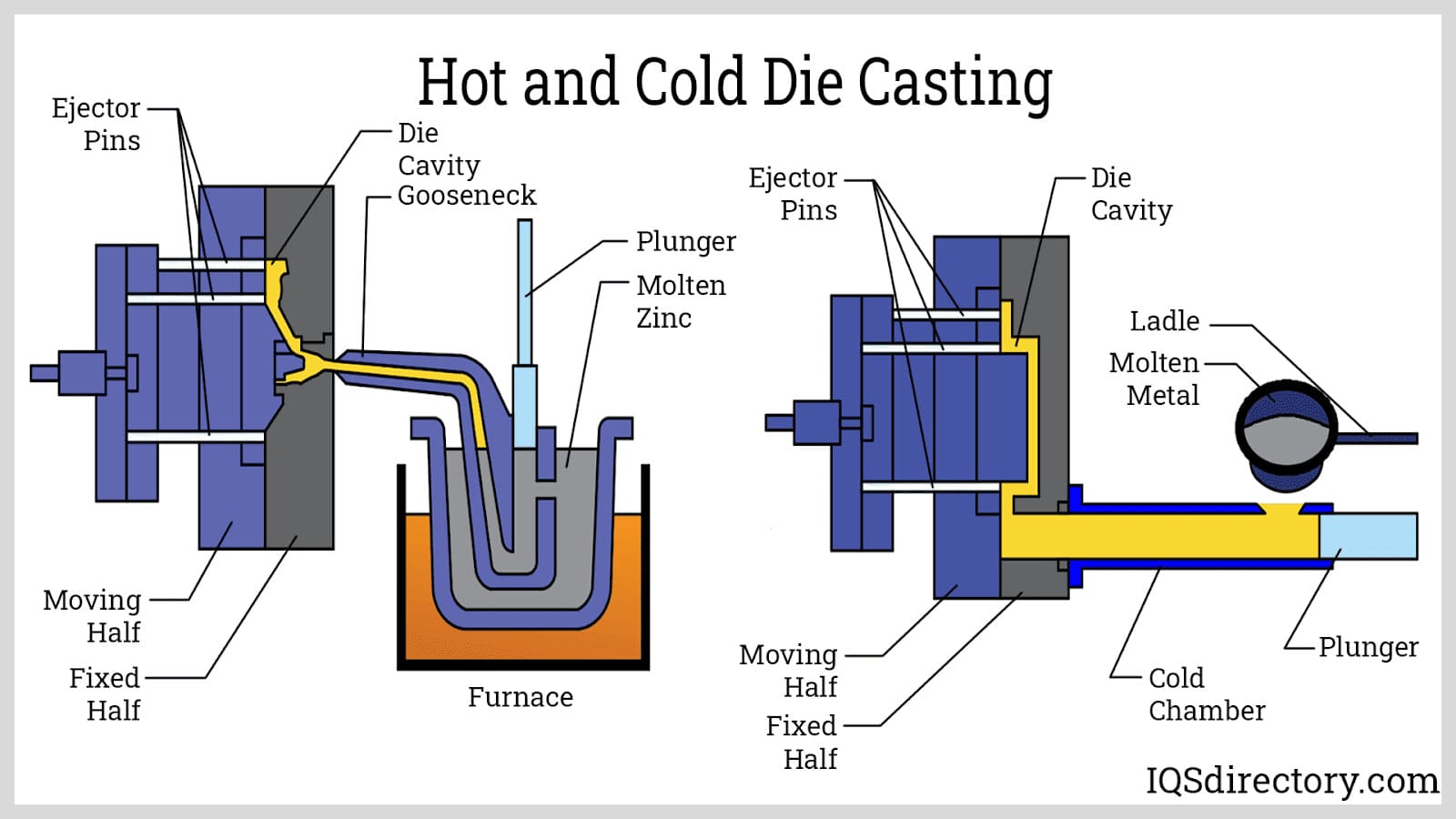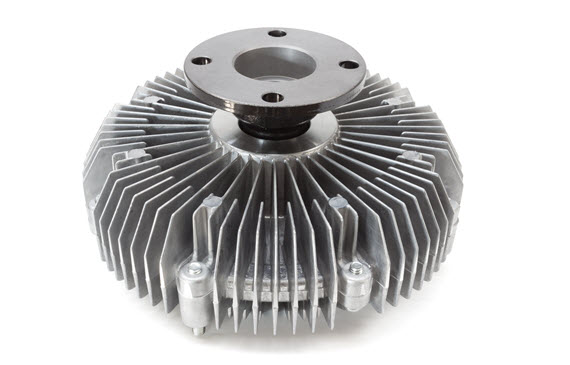Checking Out the Diverse Applications and Advantages of Aluminum Foundry in Modern Production
Aluminum foundries are necessary in today's production landscape. They produce components that offer numerous sectors, consisting of automobile and aerospace. The light-weight nature of Aluminum integrated with its longevity makes it a preferred selection. In addition, ingenious casting methods boost manufacturing efficiency. The implications of these advancements on sustainability and future fads warrant further expedition. What difficulties and opportunities exist ahead for Aluminum factories in this developing market?
The Function of Aluminum Foundries in Modern Production
Aluminum shops play a necessary role in contemporary manufacturing, adding markedly to numerous markets such as auto, aerospace, and building. These centers concentrate on the melting and casting of light weight aluminum, a lightweight, sturdy product known for its exceptional deterioration resistance and thermal conductivity. The foundries utilize sophisticated techniques, consisting of sand casting, pass away casting, and investment spreading, to generate top notch elements tailored to details applications.
Trick Applications of Aluminum Components Across Industries
Across numerous sectors, Aluminum elements are indispensable to enhancing efficiency and efficiency. In the automobile market, Aluminum is commonly used for engine blocks, transmission cases, and structural components, contributing to lighter cars that boost gas effectiveness. The aerospace market counts on Aluminum for airplane frames, wings, and elements, making use of its high strength-to-weight proportion to enhance trip efficiency.
In electronics, Aluminum is used in warmth sinks and housings, supplying effective thermal management while preserving light-weight characteristics (Aluminum Castings). The building and construction industry advantages from Aluminum in window structures, roof, and cladding, where resilience and aesthetic appeals are essential
Additionally, product packaging applications utilize Aluminum for aluminum foils and containers, supplying an efficient barrier against wetness and light. In each of these fields, Aluminum elements not just sustain functional needs but likewise promote sustainability via recyclability, making them a recommended option in modern-day manufacturing methods.

Benefits of Aluminum Contrasted to Various Other Products
The adaptability of Aluminum makes it a remarkable choice over many other materials in manufacturing applications. One of its primary benefits is its lightweight nature, which adds to minimized power consumption and improved efficiency in transportation and construction markets. Furthermore, Aluminum exhibits excellent deterioration resistance, boosting the longevity of items without the need for substantial maintenance.
Furthermore, aluminum's pliability enables detailed designs and forms, satisfying varied sector requirements, from vehicle to aerospace. Its thermal and electric conductivity likewise surpasses that of lots of choices, making it perfect for applications calling for heat dissipation or electrical transmission.
Light weight aluminum is highly recyclable, advertising sustainability in manufacturing processes. Compared to steel, it supplies a favorable strength-to-weight ratio, permitting durable yet light-weight frameworks. Jointly, these attributes position Aluminum as a favored product, making it possible for suppliers to accomplish both performance and sustainability in their products.
Cutting-edge Casting Strategies in Aluminum Foundries
In the domain of Aluminum manufacturing, ingenious casting techniques are revolutionizing the production process and enhancing the product's applications. Amongst these methods, pass away spreading stands apart for its capability to generate complicated forms with high precision and very little waste. This approach permits quick mass manufacturing, making it ideal for industries such as automobile and electronic devices. Likewise, financial investment spreading has actually gotten appeal as a result of its capacity to develop detailed layouts with superb surface area coating, fitting both large and small parts.
Another noteworthy method is sand spreading, which supplies adaptability and cost-effectiveness for creating majorities. Recent advancements in 3D printing innovations are also being incorporated into Aluminum casting, making it possible for fast prototyping and personalization. These innovations not just enhance efficiency yet likewise expand the opportunities for Aluminum applications across different fields, eventually driving the evolution of modern-day manufacturing practices.
Sustainability Initiatives in Aluminum Production
Sustainability campaigns in Aluminum production focus on boosting recycling procedures, which significantly reduce power consumption and exhausts. Implementing power efficiency techniques even more adds to a minimized carbon footprint, making Aluminum a more ecologically friendly material. These initiatives mirror the industry's commitment to lasting manufacturing and resource conservation.
Recycling Aluminum Perks
While Aluminum production is resource-intensive, recycling Aluminum presents significant advantages that align with sustainability efforts in manufacturing. Reusing Aluminum calls for only 5% of the energy needed for key production, considerably decreasing greenhouse gas exhausts. This energy performance not only preserves natural sources yet also reduces the ecological effect related to mining and refining raw materials. Additionally, reusing Aluminum supports a round economic situation by reintroducing materials back into the supply chain, thus reducing waste and advertising source preservation. The process also creates financial advantages through task development in reusing centers and lowers dependancy on international Aluminum resources. On the whole, reusing Aluminum is an important component of lasting techniques that add to a much more ecologically accountable production landscape.
Power Effectiveness Practices
The Aluminum production market is significantly embracing energy efficiency techniques to enhance sustainability together with recycling efforts. These campaigns concentrate on maximizing power intake throughout the manufacturing process. Makers are applying advanced technologies such as high-efficiency furnaces and clever grid systems, which permit for far better power management and reduced waste. Additionally, the integration of sustainable energy resources, like solar and wind power, is ending up being much more prevalent, moreover lowering dependence on fossil gas. Constant monitoring and evaluation of power use promote the identification of ineffectiveness and opportunities for renovation. In enhancement, workforce training on energy-saving techniques warranties that workers actively add to power conservation initiatives, producing a society of sustainability browse around here within the organization. These Full Article techniques jointly support a more sustainable Aluminum manufacturing landscape.
Decreased Carbon Impact
To accomplish a reduced carbon impact, the Aluminum production sector is increasingly welcoming innovative sustainability efforts. Firms are buying innovative technologies that reduce power usage and emissions throughout the production process. The combination of renewable resource resources, such as solar and wind power, plays an essential function in reducing reliance on fossil gas. In addition, the recycling of Aluminum scrap substantially lowers the carbon footprint, as recycled Aluminum calls for just a fraction of the power required for main manufacturing. Joint initiatives among manufacturers, federal governments, and ecological companies further drive progression in sustainability. By taking on these steps, the Aluminum sector not only addresses environmental worries yet also enhances its competitive side in a market progressively concentrated on environment-friendly techniques.
Future Trends in Aluminum Foundry Technology
Development is at the forefront of Aluminum Foundry innovation, improving and driving significant developments market techniques. Arising fads include the assimilation of expert system and maker learning, enhancing process optimization and quality control. These technologies assist in predictive maintenance, decreasing downtime and boosting operational efficiency. In addition, the use of 3D printing and additive manufacturing is acquiring traction, allowing for complicated geometries and reduced material waste.
Sustainability stays a critical focus, with improvements in reusing strategies boosting the round economy of aluminum. Business are significantly taking on energy-efficient approaches, such as low-pressure die spreading, which lessen power usage and exhausts. In addition, digital twins are becoming commonplace, making it possible for real-time surveillance and simulation of Foundry processes.

Regularly Asked Concerns
What Safety and security Procedures Remain In Place at Aluminum Foundries?
Aluminum factories implement numerous precaution, consisting of safety gear, correct ventilation, fire avoidance systems, regular security training, and emergency situation methods to mitigate dangers connected with high temperature levels, liquified metal handling, and potential exposure to harmful products.
How Do Aluminum Foundries Guarantee Quality Assurance During Production?
Aluminum shops apply rigorous top quality control actions such as routine examinations, product testing, and adherence to industry criteria. These protocols assure uniformity in products while reducing defects, ultimately boosting the dependability and performance of Aluminum components.
What Are the Typical Challenges Faced by Aluminum Foundries?
Aluminum shops frequently deal with challenges such as keeping constant quality, taking care of manufacturing costs, guiding regulative compliance, addressing tools maintenance concerns, and adjusting to varying market needs, all of which can impact functional effectiveness and productivity. - Aluminum Castings
Just how Does the Aluminum Recycling Process Operate In Foundries?
The Aluminum reusing process in factories entails collecting scrap aluminum, thawing it in heaters, removing contaminations, and casting the liquified steel right into preferred forms, therefore reintroducing it into the production cycle properly and sustainably.
What Are the Task Opportunities Available in Aluminum Foundries?
Task opportunities in Aluminum factories include functions such as Foundry drivers, high quality control assessors, maintenance service technicians, engineers, and production managers. These my latest blog post positions need numerous skill degrees, providing prospective for job development within the manufacturing industry.
Sustainability initiatives in Aluminum production emphasis on enhancing reusing processes, which significantly reduce energy usage and exhausts. While Aluminum manufacturing is resource-intensive, recycling Aluminum offers substantial benefits that straighten with sustainability efforts in manufacturing. Reusing Aluminum needs just 5% of the power needed for key manufacturing, significantly minimizing greenhouse gas emissions. The Aluminum manufacturing sector is significantly embracing power efficiency techniques to improve sustainability alongside reusing initiatives. Furthermore, the recycling of Aluminum scrap considerably decreases the carbon impact, as recycled Aluminum calls for just a portion of the power needed for main manufacturing.